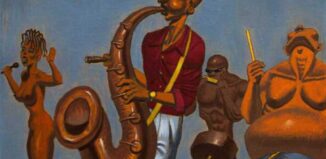Uniting with Beauty
by M.A. Istvan, Jr.
Ecstasizing us, placing us beside ourselves,
items of beauty drive us to reproduce them:
painting them, poeticizing them, and the like.
The most basic form of such reproduction
is simply keeping them present: following
the scent to stay in its plume; savoring
the taste to forestall the loss; moving
where the man’s whistling moves; tracing
the eagle to engrave it within your mind.
Is it a wonder that more beautiful women,
the best muses for begettings, are not eaten?
Is there not an urge to eat a dewy white rose?
Nostalgia’s Darkness
Nostalgia peeks in the face of crisis.
Items around us—our son’s first teddy,
the Christmas blouse, Main Street, the cotton gin—
revives a story, a home, now gone. “Things
were great then,” we think, mad perhaps at how
we took that time for granted. “If only
it was that way now.” We think this because
that was before our troubles now. Often,
though, there are other sides. It is not just
that there were likely forgotten struggles
then too. Some of these sides can be quite dark.
Take Gone with the Wind’s dark nostalgia
for a time—of unchallenged slavery.
Take as well my own dark nostalgia
for years—when my wife fought to swallow
what she most feared: full blown lesbianism.
BIO
 M. A. Istvan Jr., PhD is a Texas citrus thief. He pinches not just a few grapefruits or oranges here and there. He has coordinated large crews to help him plunder entire acres in the secret of night. Most people stay out of Istvan’s vicinity. His hurried step, fierce expression, and wild hand gestures while speaking (speaking in what is best described as auditory cursive) set off the insanity-detectors ingrained in us by deep history.
M. A. Istvan Jr., PhD is a Texas citrus thief. He pinches not just a few grapefruits or oranges here and there. He has coordinated large crews to help him plunder entire acres in the secret of night. Most people stay out of Istvan’s vicinity. His hurried step, fierce expression, and wild hand gestures while speaking (speaking in what is best described as auditory cursive) set off the insanity-detectors ingrained in us by deep history.


















